ADMINISTRATION
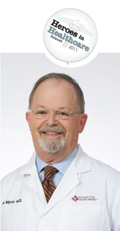 Mark Myron
Mark Myron
Kansas City Cancer Center
The war on cancer isn’t just a military metaphor; it really is a war, and a lot of lives are at stake. That’s why Mark Myron has embraced a two-front assault on the illness. The first is through direct patient care; the other is with his work to nurture the Kansas City Cancer Center into a comprehensive system for out-patient cancer care. That, he said, means treating the whole patient with cutting-edge technology, a strong research platform, and complementary programs to treat mind, body and spirit. Among his signature achievements are his efforts to establish guidelines that help maximize survival, minimize toxicities, and provide cost-savings for both the patient and payer—efforts that have cut direct-care costs by 35 percent without sacrificing outcomes, he said.
He also has helped KCCC build a successful survivorship program, led in another initiative to support cancer caregivers and relatives of cancer patients, and pushed for a rethinking of end-of-life care. His ultimate accomplishment, though, is his work with patients. In addition to his leadership role with KCCC, he said, “I continue to treat patients on a daily basis and enjoy getting to know them and their families as we embark on the journey of battling cancer together. I have met and treated many wonderful patients. The patient-physician relationship is the most crucial part of the journey. My patients look to my guidance and I continue to be humbled by their trust and loyalty.”
While he celebrates the successes made in cancer treatment throughout his career, he knows there is much work to be done. “I think any oncologist will tell you that despite new technology and drugs, some patients don’t have a positive outcome, and those are disappointments that occur individually,” Myron said. And, as with any area of medicine, he says, “it’s difficult to look back at what was and what could have been. There are plenty of patients who I have cared for in the past who could have benefited from today’s therapies.”
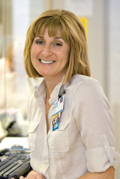 Angela Gamber
Angela Gamber
Stormont-Vail HealthCare
Angela Gamber’s career was born of grief.
“My little brother was killed in a motor vehicle crash, and from that point forward, I knew that I wanted to do what I could to improve the outcomes of patients involved in emergencies and traumas,” say Gamber. Today, she is the administrative director of Emergency and Trauma for Stormont-Vail in Topeka. From that personal loss, Gamber has found a purpose. The passion for what she does continues to grow, she says, “as I learn from the trauma surgeons, emergency physicians and trauma nurses who amaze me daily with the awesome care that they provide to our patients and families.”
Life-and-death issues are no stranger to anyone who works in a hospital, but perhaps no more acute in their manifestation than in the emergency room. That requires something a little different from a manager who is dealing with high-stress situations and, at times, overtaxed personnel. “I strongly believe that you have to do the right thing” by your charges, she said, “and let the people at the bedside help you improve processes and outcomes and then be a leader by setting the example. ... I am in the trenches daily and I see the difference we make in the lives of others.”
It is inspiring, she says—and easy to inspire others—“when you have been surrounded by miracles, had the privilege of holding hands with the dying and praying with families, and working with the best professionals in health care who have become my mentors, colleagues and friends.”
During her tenure, the hospital has seen significant gains in ER/Trauma patients, which she attributes to the staff’s commitment and the hospital’s mission to provide great care and service. That growth has also been a challenge for the staff, one that Gamber relishes. “I love to watch new nurses grow, I enjoy coaching them and I even enjoy them ‘schooling’ me,” she said. “The nurses, physicians, surgeons and staff that I work with daily are incredible. They do such extraordinary things—routinely!”
 Jon Jackson
Jon Jackson
The University of Kansas Hospital
Looking back to 1983, Jon Jackson recalls, it looked as if it would be a job, not a career-long commitment.
“Certainly,” he says, “I did not expect to remain here for (now) 28 years. But the hospital gave him something he hadn’t seen coming: “Great opportunities to learn and serve in a variety of areas without the need to leave the organization. At the same time, while there have been organizational and personal successes and challenges over those years, it is the people who work here that have created and maintained the connection and attachment I have to the University of Kansas Hospital,” he says. As chief administrative officer, Jackson has been instrumental in the rebirth of the facility. Before 1988, Jackson says, the hospital was essentially a state agency trying to operate in a highly competitive and rapidly changing business environment, and its very future was in doubt.
He was instrumental in crafting the bill that won legislative approval to restructure it as a public health authority, opening doors for expansion and innovation that had been sealed by statute and policy. What he saw in the years leading up to that point would inspire broad change under his watch as chief operating officer, senior vice president and his current role. “I saw the difficulties our physicians and staff experienced in trying to deliver the best care for our patients in an environment that was not ideal and with technology that was not the most current.”
Changes wrought during his tenure have yielded, he says not boastfully, “a level of care and service that is among the best in the nation.” Reinforcing that belief are experiences like that involving a patient, badly injured in a farm accident, who defied doctors’ expectations by not only surviving, but walking again. “Nine months after his injury, he walked into our executive office to tell us of the ‘amazing staff’ and care he believed saved his life and allowed him to return to a normal life,” Jackson said. “These are the kinds of outcomes that make me proud of my association with the exceptional people I have the privilege to work with.”
PROFESSIONAL SERVICES
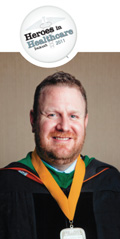 Craig Dietz
Craig Dietz
Kansas City Free Health Clinic
It’s a long way from Craig Dietz’s hometown of Pratt, Kan., to his office at the Kansas City Free Health Clinic at 24th and Van Brunt Boulevard—and not just measured by miles. But the 4-H lifer who grew up with community service infused into his psyche lives that call to service each day, providing quality care in a setting where cost considerations mean everything. Every dollar saved treating one patient helps treat the next, he notes; every minute of service volunteered by medical professionals and others makes that same dollar go farther.
After training at an urban hospital in Detroit and later being roped by one Sister Mary Rosaleen Driscoll into a volunteer shift a the free Marian Clinic in Topeka, “I found that I wanted to be at the free clinic all the time and fell in love with the patients and the other volunteers that make good free health care happen,” Dietz said. That experience led him to the Kansas City clinic, “where I get to interact with not only the uninsured in our community but a whole team of volunteer doctors and nurses from the region that allow us to provide a tremendous amount of health services free of charge to anyone in need.”
Among the greatest satisfactions he derives from his job, he said, is training other physicians to manage patients, balancing the need for top-notch care with bottom-dollar considerations. Hopefully, Dietz said, those doctors and nurses can take that knowledge back to their own practices, churches and neighborhoods. Beyond that, he said, “I feel like it is my duty also to teach patients and their families how to manage their own health care as much as possible and engage them in support services here and in the community.”
The opportunities to do so are boundless. “Despite having the best health-care technology in the world, ordinary people slip through the cracks all the time,” Dietz said. That’s why an emphasis on free clinics and community volunteerism are so important, he said: “Small amounts of funding can go a very long way in providing essential primary and preventive health care at the community level.”
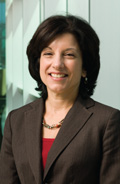 Shirley Weber
Shirley Weber
University of Kansas Hospital
Consider this: One in 10 patients entering a hospital will require a blood transfusion. And this: The two dozen largest hospitals in the Kansas City region admitted more than 250,000 patients last year. Those figures should give you a greater appreciation for all the Shirley Webers of the world, but this Shirley Weber in particular. She’s director of laboratory medicine and the pathology department at the University of Kansas Hospital, and her skills in blood management have earned her wide acclaim in the region. Modern Healthcare magazine, too, has honored her for efforts to change the culture of blood management, which has led to reductions of usage in a scarce commodity.
In early 2009, after the hospital identified blood management as an area for improvement, it turned to Weber. “I began researching blood management programs and the many benefits and quickly realized the impact on quality and patient safety,” she said. “Transfusion safety consists of providing a safe product, ensuring patient safety, and safety of the delivery of the product. Much time has been spent on the safety of the product, but not the safety of the patient and delivery of the product.”
Working with teams of professionals at the hospital, she helped rewrite protocols that have been adopted not only there, but throughout the region. She’s gone on to help train more than 2,000 nurses and more than 250 physicians, who had to be weaned off of decades-old practices.
“Change is challenging, especially in an organization of our size,” Weber said, so they turned to the works of John P. Kotter, a specialist in managing change, with resounding success.
A great deal of her career, then, has been in vein; she started in the field while still in college, working as a phlebotomist in a large hospital to pay her tuition. “I loved being surrounded by patients, their families and also intelligent, hardworking, driven people such as physicians, nurses and other clinical staff,” she said. “I love health services today for the same reasons. I feel energy and a purpose every day I walk through the doors of our hospital. It’s an environment of caring, teaching and continuous learning.”
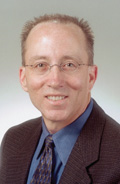 Terry Jett
Terry Jett
Providence Medical Center/St. John Hospital
It’s not just an opinion for Terry Jett, it’s a creed, something he lives by: “There is absolutely nothing more gratifying and heart-warming,” he says, “than working with a child who has had a disabling disease since birth and making a difference that will improve his life.” Jett is service line director for Providence Medical Center and St. John Hospital, focusing on orthopedics, oncology and regulatory readiness. He’s been involved in development of Providence’s programs in joint-spine replacement, sports medicine, radiation oncology, pain-management and patient-satisfaction programs, extending his influence far beyond the physical therapy role that launched his career in health care.
“It seems I have always been interested in health care,” Jett says, reflecting on how volunteer work in a hospital physical therapy department sparked his interest. Physical therapy, he said, was “constantly challenging and simultaneously rewarding. … No matter how challenging the day, witnessing a patient’s determination and perseverance to overcome functional challenges in their life and make improvement is more powerful than words can describe.”
Rarely has that power made a greater impact on Jett than it did when he worked with one 6-year-old boy who was both mentally and physically impaired. It’s a simple act many take for granted, but the child had never been able to effectively sit up on his own. “Not only was this a successful quality improvement in this child’s life,” Jett said, “but it enabled him to more actively interact with others and gain a new perspective and appreciation of his environment.”
Physical therapy fueled an appetite for developing skills in other health-care arenas, leading him to program development that has broadened the range of services offered through the hospitals and elevated their standings. Regardless of the venue, Jett derives the same high from seeing others overcome their health-care challenges. “You discover, in many ways, that your particular life challenges are never as bad as they appear,” Jett says. “The perspectives you gain from your patients’ experiences remain with you forever.”
NURSING
 Cherie Durkin
Cherie Durkin
VA Medical Center
Cherie Durkin met him almost two years ago. He was 71, a former combat officer in Vietnam who had just surrendered to decades of grief, guilt and anger over young lives lost under his command. Hidden to all who knew him, those sentiments shocked his loved ones and his colleagues, who compelled him to seek counseling through the Veterans Administration. That’s what brought him into Durkin’s life; she’s the nurse who runs the suicide-prevention program for the VA Medical Center in Kansas City. His story is a powerful example of what draws her to that often-overlooked niche in the health-care system.
“This veteran lived with the sadness and isolation of seeing combat his entire life,” Durkin said. “Never spoke of his experience to his wife. This gentleman went to treatment and responded very well.”
It’s a success story with profound implications. Each similar case successfully treated saves unknowable sums in future treatment and medical costs. The VA, Durkin said, had been at the vanguard of such efforts, particularly through its SAVE initiative, which helps protect not only the safety of veterans, but of their families and friends. When the VA rolled the program out, she said, “challenge of being on the ground floor of this was exciting.”
“I believe that VA is unique in this initiative,” Durkin says, but she notes that it is an issue that involves far more people than the nation’s veterans. “Many people suffer with various types of mental illness,” Durkin says. “What is important to know is that mental illnesses are treatable. Over time, there have been many theories set forth for treatment of mental illness; my job is to help the veteran get what they need to help them manage their particular illness. It is extremely rewarding watching a person who was only seeing suicide as an alternative begin to be a functional, productive person again.”
 Barb Haney
Barb Haney
Children's Mercy Hospital
Barbara Haney works in the neonatal intensive-care unit at Children’s Mercy Hospital, where—too many times to count—the payback for what she does walks right up to her and says “Thanks.”
“There have been so many families in the years that have come back and are so thankful for what I’ve done—with all the other nurses and doctors here—to save their child,” Haney says. “To work with a baby who is dying as a newborn from an infection or pneumonia or some other lung or heart issue, and then meet that child in high school or after and learn they are in college—studying to be nurses or physical therapists or teachers—is absolutely phenomenal. And to know that I played a part personally just humbles and honors me.”
Every time that happens, Haney says, it validates that she did indeed answer the right call in life: “I am so privileged to have the job I do at Children’s Mercy Hospital.”
She says she discovered that line of work quite by chance more than three decades ago, working at a hospital in Texas. Previous experiences in adult intensive-care had left her frustrated and burned out. A nursing director with a keen eye for potential matched her up with neonatal casework. “I didn’t know that field of nursing existed prior to that and in a very short time I was hooked for life,” Haney said. “I love the babies. I love the opportunity neonatology provides of caring for the tiniest and most vulnerable patients and the huge impact we have on their lives. They are so fragile and vulnerable and can’t tell us what is wrong as an adult can. Yet they respond so greatly—to treatments, to comfort.”
She finds true reward not just in healing those tiny patients, but in being part of healing whole families: “Part of the best part is the parents and being able to help them along their journey,” Haney says. “Some families, I am able to begin helping even before the baby is born, then after the baby is born, being able to help them and help the baby is very rewarding.”
But the real best part, she gushes, “is seeing the baby get bigger, stronger, and respond!”
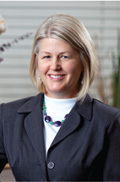 Jan O'Dell
Jan O'Dell
Olathe Medical Center
Jan O’Dell may be more like the wizard behind the curtain than Florence Nightingale, because her reach at Olathe Medical Center goes well beyond that of a front-line nurse. The hospital has called on her to be part of the planning and development of its ambulatory surgery center, its wound-care center, cardiac-surgery program, pain-management center and outpatient services department. Every nurse working in those areas, then, is a bit of an extension of O’Dell’s reach.
“I prefer to be a behind-the-scenes person, and find a lot of satisfaction providing support for the folks that are on the front line,” said O’Dell, noting that successful patient care requires a team approach. “Each member of the patient care team has a significant and meaningful role, some more visible than others to the patient.”
The role may have been behind the scenes, but O’Dell can answer the curtain call with its impact. “Seeing those first few patients being cared for once the programs are in place is the ultimate enjoyment,” she said. “There are so many people necessary to really provide a superb program and have things go smoothly, all to provide the best of care for patients. … I’ve been fortunate to have had the opportunities to be involved in several different services and seeing how each can impact a patients life in a positive way.”
Drawn to a career in medicine by the combination of anatomy with other scientific disciplines, she says she’s been held there by the top-notch talent she gets to work with every day. But the rewards of effecting positive change in patients are powerful attractions, as well. O’Dell recounts the case of a young girl with an illness that produced serious disfigurement—a debilitating 1-2 punch for someone starting to frame her self-image. “I realized that caring for her physical as well as emotional needs were both equally important and necessary for her healing,” said O’Dell. “The time I was able to care for this patient and work with her family really helped me see the total patient care. There is satisfaction with treating people’s physical needs and satisfaction with treating people’s emotional needs. I realized both are equally as important and in healthcare are inter-related.”
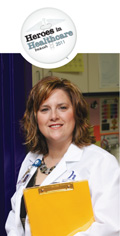 Dana Kapp
Dana Kapp
Heartland Health System
“Pediatric medicine is so unique because in order to help the patient, we must teach the family,” says Dana Kapp, a nurse practitioner for Heartland Health System in St. Joseph. Consider the challenges that presents: In almost any other doctor-patient relationship, a physician dispenses advice directly to the patient. No middleman involved. Not so with minors.
“It is very hard and unrealistic to sit down and talk with a child about making healthy food choices if their mom is sitting in the room drinking a 64-ounce (soda) and eating a bag of chips,” Kapp said, neatly tying together her two primary interests: children’s health overall, and the national epidemic of childhood obesity.
Kapp is a comparative rarity among nursing professionals; only 5 percent of those working as registered nurses hold nurse practitioner credentials. But she felt it was necessary if she were to realize her potential in treating children. “I felt like I could do more to help children if I advanced my degree. When I first started graduate school, I really didn’t know what I would do with a master’s degree,” she said. “I have been practicing as a pediatric nurse practitioner for almost 11 years. I can’t imagine any other profession that could be any more rewarding.”
Her commitment to children’s health and her skill with patients made her Heartland’s choice for its 2010 Nurse Excellence Award, the highest honor the system bestows on its nurses. Above all, she’s known for her compassion, which was on full display the day she stood in an office hallway, sharing tears with family friends who were hearing her deliver the news confirming Type-1 diabetes in their daughter.
“I feel very proud to be able to have the type of career where I feel like I can make a difference every single day,” Kapp says. “I feel like making the investment in my patients is making an investment in the future of our community, and I can’t imagine anything more satisfying or rewarding.”
 Peggy Eldredge
Peggy Eldredge
NKC Hospital
Treating breast-cancer patients consumes Peggy Eldredge’s professional life, but her interest in this fight goes way beyond professional. “On a personal level, seven of my family members were diagnosed with breast cancer, including my mother in her early 40s and my grandmother,” Eldredge notes. But that experience also sustains her in fighting the good fight every day: Her mother survived the disease for 37 years; her grandmother lived to see a 100th birthday. Those successes are a prism through which she can view the new cases and the challenges they pose for women dealing with body-image changes, concerns about the care of their children, intense reactions to chemotherapy and more, Eldredge says. “Although we have made considerable advances in breast cancer diagnosis, treatment and symptom management, it remains a formidable challenge for those who are confronted with it, and the advances have increased the complexity. That is why I feel that nurse navigator positions are so important.”
Her own interest in medicine was kindled by a stint as “candystriper” at a local hospital, she said. “I really enjoyed the patient contact, and trite as it may sound, found it rewarding to help people.” She decided then that she wanted to be a nurse. Later, her first exposure to oncology involved a case of acute leukemia that instilled in her a ravenous appetite for knowledge on diagnostics and treatments, and her interest was further stoked by what she called a contagious level of passion for cancer treatment exhibited by a role-model physician. “That enthusiasm and quest for learning has not changed for me over the years,” Eldredge says. “Being in the oncology area for so long has given me the perspective to see both how much progress we have made in the field, and how much we have yet to do. It is that ‘to-do’ list that keeps me there—that, and the feedback I get from patients who indicate that I do make a difference.
“Knowing that I did something to make someone’s life even a little bit easier is a wonderful satisfaction.”
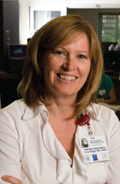 Lisa Riggs
Lisa Riggs
Saint Luke's Mid-America Cardiovascular Institute
When Lisa Riggs dresses for a shift at Saint Luke’s Mid-America Cardiovascular Institute, she’s really donning battle gear. After all, nothing in America kills like cardiovascular ailments, which exact more than twice the toll that cancer does. “The greater the risk, the greater the reward,” Riggs notes. “Imagine the feeling of assisting someone to beat the odds.”
What inspired her to choose that field? Easy, she says: The chance to have an impact. Nearly half the decrease in the national rate of cardiovascular-related deaths has been attributed to evidence-based strategies in medical therapy, Riggs said, and “I believe the work on the local and state level to implement these strategies for victims of a specific type of heart attack will make a difference in mortality.”
At the bedside level, though, the payback is instant. “I get great pleasure from immediate feedback that the patient’s condition is improved,” Riggs says. “Treatments for many diseases and illnesses take some time before one can see the results. Typically, we see immediate results.” When that happens, she says, it’s “a great feeling to see someone come in very ill and return home in a short amount of time.”
One episode that stays with her involved a man who had suffered a heart attack on the Country Club Plaza, just down the hill from Saint Luke’s. Her own role in his treatment had been assisting in setting up a system that made it possible for a cardiologist to immediately treat him and open his blocked artery. The likelihood of that man’s survival, she said, would have been greatly diminished had the physician not been able to act swiftly.
A lot has changed in health-care since she started nearly 30 years ago. For one, it’s a lot more complicated. But, she notes, “some things have not changed; it takes a team when someone needs medical care, and saving a life is still a great feeling.”
AUXILIARY STAFF
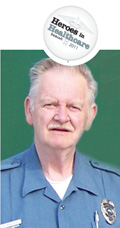 Ernie Walters
Ernie Walters
Providence Medical Center
Deep into labor, she had wandered into an unattended area at Providence Medical Center and dropped to the floor. That’s where Ernie Walters found her. Before anyone could respond to his calls for help, the 28-year-veteran of Providence’s security staff was holding a freshly delivered infant boy.
“I tapped him on his rear end once, but that didn’t do anything,” Walters recalls. “The mom was hollering, ‘My baby’s not breathing!’ so I whacked him a little harder, and man, that baby yelled out so loud I thought, ‘Did I tap him too hard?” Moments later, the neonatal staff arrived to relieve him of his howling burden.
Such was life as a security guard for Walters, who retired Christmas Eve after 28½ years at the hospital. He was credited with another life saved about 15 years ago, when by miraculous chance he heard the muffled cries of a woman who had fallen though the top of a snow pile into an opening below. “She had turned blue; they said we got her to the ER just in time,” Walters recalls.
Delivering babies and saving lives wasn’t in the official job description, he noted, but being there for people in need was exactly why he was there. Perhaps his fondest memory involved a woman being treated for terminal cancer, who had mentioned that her late husband had been a great dancer. “I would love to have one more dance before I die,” she mused. Not long after, Walters and a partner stopped by her house, cranked up the volume on a tape he had bought for her, and invited her to dance. “We danced with her, had a good time, right in the driveway,” Walters said. “We took her inside, set her down and she said, ‘That was my last dance, and I thank you.’”
Years after that, though, a young woman approached him, and said “You’re Ernie, aren’t you?” It was the daughter of that dying woman, who hugged him, thanked him and told him that, in her final days, her mother had gone on and on about that dance. “Five minutes of joy is worth it to me because it’s the end of their life,” Walters said. “If we could help them be happy, that made us happy. We did our job.”
 Sharon Franklin
Sharon Franklin
Western Missouri Medical Center
Sharon Franklin may have hit on the key to dealing with the high costs of health care: Ice cream.
Last August, says the president of Western Missouri Medical Center’s hospital auxiliary, “we had our First Annual Ice Cream Social, with the proceeds going toward the purchase of an Accu-Vein 300. The device illuminates veins for blood work, helping to alleviate multiple sticks, and the auxiliary decided to do something to help offset the $4,500 cost. “Over 400 people attended, enjoying ice cream with all the toppings, as well as delicious home made pies, cakes, cookies, brownies and cupcakes,” Franklin beamed. “Hospital staffers were on hand in the lobby to demonstrate the device, to the amazement and fascination of those in attendance.” Perhaps even more amazing, was they raised enough money to buy that Accu-Vein.
That’s just one of the small victories that make service through the auxiliary so rewarding, says Franklin. She first aligned with the group after retiring from a career in high school special services. “I had time on my hands,” she said, and “many of my friends were members of the auxiliary and encouraged me to join. I did, and feel it was one of the best decisions I have made.”
That was in 1992. She became a member of the auxiliary’s board in 1995, then president of it in 2001. That service, she said, “has afforded me a chance to touch many lives, experience great personal growth; and together with all of our approximately 300 members, we have accomplished many good things for the good of many. “
That service has also shown her the value of getting involved in such support efforts. “It’s immeasurable,” she said. “At a time when the economy is depressed, with so many people out of work, it affords an opportunity for the unemployed to give of their time where it can be readily assimilated for a positive outcome, for both the health care facility as well as the individual.”
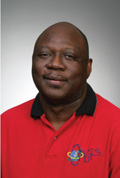 Darrell Stafford
Darrell Stafford
Children's Mercy Hospital
The breakfast shift at Children’s Mercy Hospital starts at 6 a.m. sharp. And by 6:01, says Darrell Stafford, “they’re lined up, and they’re hungry!”
For nearly eight years, Stafford has put his cook-to-order skills on display at Children’s Mercy, where the order may be pancakes, omelettes, quesadillas—just about any morning dish you can think of, Stafford is firing up. After all, he notes, most hospitals have evolved past the days of one-size-fits all meals that you can take or leave.
For the past 35 years, Stafford has been making a living by wielding a spatula, ever since he stepped up as a teen to take on the cooking duties for a friend who owned a bar. He later moved into institutional settings, doing stints at the University of Missouri–Kansas City and the University of Kansas Hospital. At Children’s Mercy, though, he’s found the kitchen and the mission that fits his own needs. “The management and the workers here are a pretty good crew; it’s a nice place to work,” he says. “You do what you’re supposed do, and nobody is always looking over shoulder. They give you the opportunity to do your job. I really like that.”
What makes it truly special, though, “is the look on their faces when these kids come to eat,” Stafford says. “Sometimes, it’s the things you can say. Hospitals can be really gloomy, especially for the sick kids, but you can put a smile on their face with a greeting and you can do things for them that make them happy. Even though they’re sick, when they smile and wave or say hello, that makes you feel good.”
His signature piece: “They love Philly cheesesteak, that’s the best dish,” Stafford says. And the key to nailing a cheesesteak, he says, isn’t leaving that kitchen. “Oh, I put in a little more of this, and a little more of that,” Stafford says with a laugh. “I can’t tell you my secrets!”
VOLUNTEERS
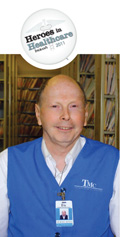 Mike Revels
Mike Revels
Truman Medical Center
For Mike Revels, the math is simple: With 10,000 hours, you can watch enough reruns of “Gilligan’s Island” to make you loopy, or you can make a real difference in the world around you.
In 1983, Revels turned off the TV. “I was at home during a regular work week watching television when I realized there was a lot of free time involved,” Revels said. “I could spend my time watching television, but that would be wasting time and there would be no accomplishment. I had five days, so would choosing three days to help people not be asking too much?”
Since then, he’s been a regular at Truman Medical Center, most recently working six-hour shifts each Monday, Wednesday and Friday. That’s before he reports to the Internal Revenue Service in the afternoon, where he works full-time as a tax-examining clerk.
Initially, he said, he worked at a nursing station, and the tasks were relatively simple: making sure patients had water. But even that routine task showed him something: “I could tell the patients and the staff appreciated it,” he said. “The nurses were busy attending to the patients. They didn’t have much time to see if the patients were low on water.” Over time, his duties have evolved into work in the diabetes clinic and oncology department, as well as in human resources. His attention to detail and organization skills have been a blessing for keeping records in order, administrators say.
It’s more than just a pair of helping hands, they say: Every minute a doctor or nurse can be spared the task of record-keeping is one more minute they have to provide patient care. And that’s just one source of what keeps Revels at it.
“A person may give their time to help others, but what you receive is very gratifying” in return, he said. “You feel good knowing you have helped your fellow man, who might be experiencing a low place in their life, accomplish something with your help.”
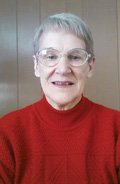 Harriet O'Brien
Harriet O'Brien
Kansas City Presbyterian Manor
Another Friday is closing in, and Harriet O’Brien is preparing her shopping list. The focus this week is on toiletries, so she’ll be gathering shampoos, soaps, toothpaste and toothbrushes to fill the grocery sack she brings to Kansas City Presbyterian Manor each week. “I usually bring things to eat for the folks there,” she says, but at times, it’s nice to help residents of the retirement center restock their personal goods, too. That’s just one example of the consideration she shows those residents as a volunteer at the manor in Kansas City, Kan. “They really appreciate it,” she says. “For so many of them, just having someone to touch them on the shoulder and listen to them means so much.”
The staff at the manor give O’Brien high marks in one category in particular: mirth. Maybe it’s the Irish bent for the congeniality she’s brought to the manor for 15 years, delivering mail, bringing residents to chapel services every Friday or helping compile personal histories of residents, administrators there say. A native of Iowa and mother four times over, she worked for two decades as an office manager for a group of psychotherapists in private practice. But she and her husband, in a tip of the hat to both their Irish roots and their desire to serve, spent six months in Dun Looghaire, Ireland, in 1974 where they helped an independent agency set up homes for unwed mothers.
Now retired and living close to the manor, O’Brien is still acting on that call to service, said Suzi Lockett, the manor’s volunteer coordinator. “I enjoy interacting with the residents and enjoy the staff and meeting other volunteers,” says O’Brien, who was named Volunteer of the Year at the manor in 2010. “I always leave the manor with a feeling of accomplishment. Of course, I enjoy getting a cookie from Suzi’s desk to have with my morning coffee.”
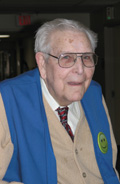 Rev. Cecil Goeking
Rev. Cecil Goeking
St. Mary's Medical Center
Twice a week, at 8 a.m. sharp, Cecil Goeking shows up to provide moral support for patients at St. Mary’s Medical Center in Blue Springs. He may be a retired Baptist minister, but he’s hardly out of place at the Catholic hospital, where he fills a vital need as a volunteer with the spiritual care department.
His 93rd birthday is closing in on him, yet Goeking drives himself there each Thursday and Saturday to wield an instrument that he considers a God-given gift, especially for those depressed by recent health setbacks: “The Lord gave me the ability to change their lack of hope to smiles and expressions of gratitude,” he says. “It brings joy to my heart that I have been able to help them.”
His subtle sense of humor may be the tool, but personal experience is what allows him to apply effectively, he said. After all, over a period of 92 years, one can go under the knife more than once, and patients can relate to that. “When they understand that I have been through the same surgery and am still able to get around and do what I do, it’s also an encouragement to them,” Goeking said.
And as witness to their elevated spirits, Goeking believes he’s getting back more than he’s putting in: “If I am a blessing to the patients—great,” he says. “But I feel that I have been blessed more than they when I see and hear their ‘Thank yous.’”
On a more serious side, he offers “wonderful pastoral skills,” said Sister Ann Strizek. “He is a faithful servant of God and we are blessed to have him here with us.”
The spiritual-care staff at St. Mary’s tells Goeking in jest that he’s on a 10-year “contract,” and that they intend to hold him to it. Fine by him: “I can still see myself doing the same thing at 102 years old,” he says.
LIFETIME SERVICE
 G. Michael Johnston
G. Michael Johnston
Kansas City University of Medicine and Biosciences
He teaches medicine for a living, but G. Michael Johnston is all about the return on the investment he gets from students. “Every time I start the session on whatever the course is, I say, ‘I promise I’ll give you 100 percent, and in return, you give me 110 percent.’ And that’s how I’ve worked.” If only the rest of us could see a 10 percent return every couple of hours. Johnston spent 23 years in private practice before returning to his alma mater in 2000 as an assistant professor. A year later, he became chair of the internal medicine department and program director of internal medicine residency. Over the course of his career as both a care provider and an instructor of care providers, the fundamentals haven’t changed much, but the world of medicine and instruction certainly has, he noted.
“Anatomy is the same; pneumonia is the same,” Johnston said. “But we do have ways now to present it and to understand the pathophysiology of those things a lot easier than we did in years past. The down side of that is the volume of material that’s now being thrown at these kids.” Above all, though, “I do think that in order to be a good teacher, you need to know how to communicate to your audience,” he said.
That’s where his skills as an engaging instructor come in. Four times, he’s been voted Teacher of the Year by the intern class at Park Lane Medical Center, and he was similarly recognized twice more by the former Medical Center of Independence.
“I was taught in that era to ask ‘why?’ and I was fortunate to have mentors that I really respected, who allowed me to ask. So I owe a lot to my trainers,” Johnston said. “These were internists who spent time with me and taught me. If I were going to give any credit, I’d like to recognize three men: H.W. Witt, D.O., Gerald Williams, D.O., and Leonard Mennen. It’s these three guys that I admired, and these are the guys that stimulated my interest to ask why.”
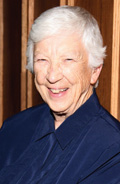 Sister Rosemary Flanigan
Sister Rosemary Flanigan
Carondelet Health System
As a former board member of St. Joseph Hospital, Sister Rosemary Flanigan was right outside the delivery room when Carondelet Health System was born. But she was no disinterested observer. “What that early experience taught me—and this was the time of HMOs—was that health-care delivery systems had to heighten their advocacy of patients’ rights, particularly for the poor,” she recalls. But, she says, as health-care delivery became more formalized, more specialized and bigger in so many ways, the board insisted that the presumption of care for the poor be made explicit. “As a result, ‘special concern for the poor’ was inserted in our mission statement, which is blazoned on our walls, printed on the back of every ID, and serves as the basis for orientation of employees and medical staff,” she proudly notes.
After 64 years of service to the Sisters of St. Joseph of Carondelet, she has only recently re-retired, wrapping up a career that has taken her to classrooms at the elementary and high school levels, then to Rockhurst University, where she spent 17 years as a philosophy professor. That led to her first “retirement” in 1992, but Sister Flanigan wasn’t ready for the pasture. She served on the board for St. Joseph Hospital before its 1997 evolution into Carondelet Health, and her advocacy for patients’ rights stems in part from her service on the board of the Midwest Bioethics Center, now the Center for Practical Bioethics.
“I realized that informed consent in health care was often perfunctory,” she said of her interest in the nexus between medicine and ethics. “No more basic human right exists than to understand our options and give consent,” she said. “And with our end-of-life wishes, our advocacy was toward having those wishes honored by providers.” Now, at 84, she’s back at her own high school; she pulls shifts as a volunteer archivist in the library of her alma mater, St. Theresa’s Academy.
 Everett Murphy
Everett Murphy
Olathe Health System
None of us, as Everett Murphy wryly notes, is getting out of here alive. That’s what makes it all the more important that each of us have specific goals leading right up to that final breath. Murphy, a pulmonologist by training, now directs the palliative care department at Olathe Medical Center, and just about every day, he gets to wrestle with the elephant in the consultation room: The prospect of imminent death. He’s part of the hospital’s counseling team that has embraced a more compassionate approach to delivery of bad news. It’s one grounded in finding the positives from a situation fraught with negativity.
“What prompted this approach was to see a lot of suffering when it doesn’t have to occur,” Murphy said. “The reason we have unnecessary suffering is that too often, there is no anticipation of death. …With society in general, it’s ‘If we don’t talk about it, maybe it won’t occur, and we won’t have to deal with the emotion stresses and strains that come with it.’ Murphy’s evolution into palliative care was a natural one, he said. When something goes seriously wrong with lungs, death at times is not far away. “We as a profession are often given patients who are desperately ill,” he said. A lot of palliative care physicians are from outside pulmonology, but a lot of pulmonologists end up in end-of-life settings.
The team’s focus on listening—Murphy cites the 70/30 Rule of spending the bulk of the time listening to patients—often leads to patients’ coming to terms with their mortality, and taking charge of how their remaining days might be spent at least happily, if not always productively. “The challenge to palliative-care physicians is to introduce the prospect of death in a way that is not a negative thing, but something more positive, so people looking to the end of their life, when it occurs, can have a good death, without unnecessary suffering, unnecessary things done to them, like surgeries that end up in disaster.” It all stems from setting goals, he said: “When you have goals, things that seem complicated become rather easy.”